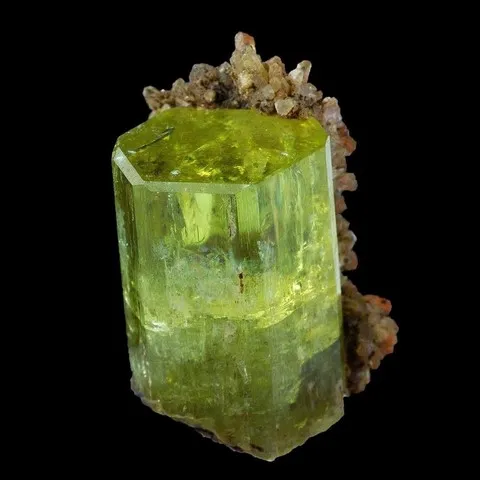What is a phosphate in mineralogy ?
Phosphates : definition
A mineralogical group, apatite, Ca5(PO4)3(OH,F,Cl) largely dominates this class by its abundance and its geological and economic importance. It alone concentrates more than 90% of the phosphorus in the earth's crust.
Equivalent tetrahedral units (AsO4)3- and (VO4)3- are the basis of arsenates and vanadates. P5+, As5+, and V5+ are easily replaced in anionic groups, there are transition terms between phosphates, arsenates and vanadates. Pyromorphite, Pb5(PO4)3Cl, mimetite Pb5(AsO4)3Cl and vanadinite Pb5(VO4)3Cl, for example, form extended (but not complete) series between them.
The term "phosphates" also applies in a somewhat abusive way to sedimentary rocks essentially formed of phosphates (in the form of fluorapatite and carbonate-apatite) : the phosphorites.



